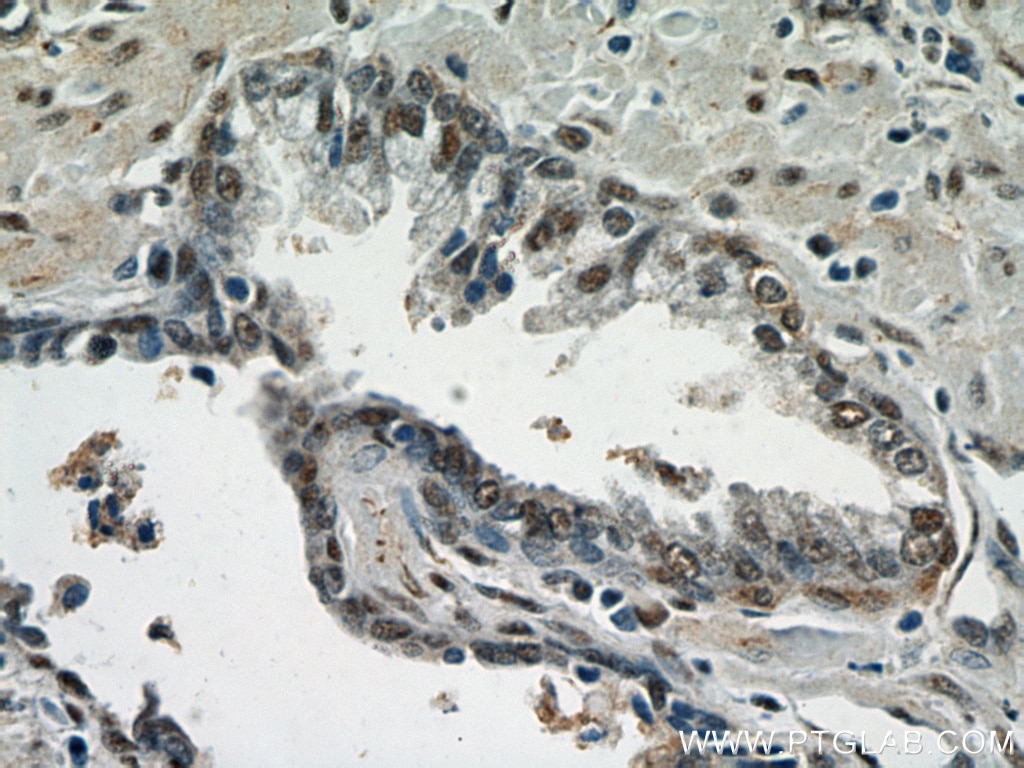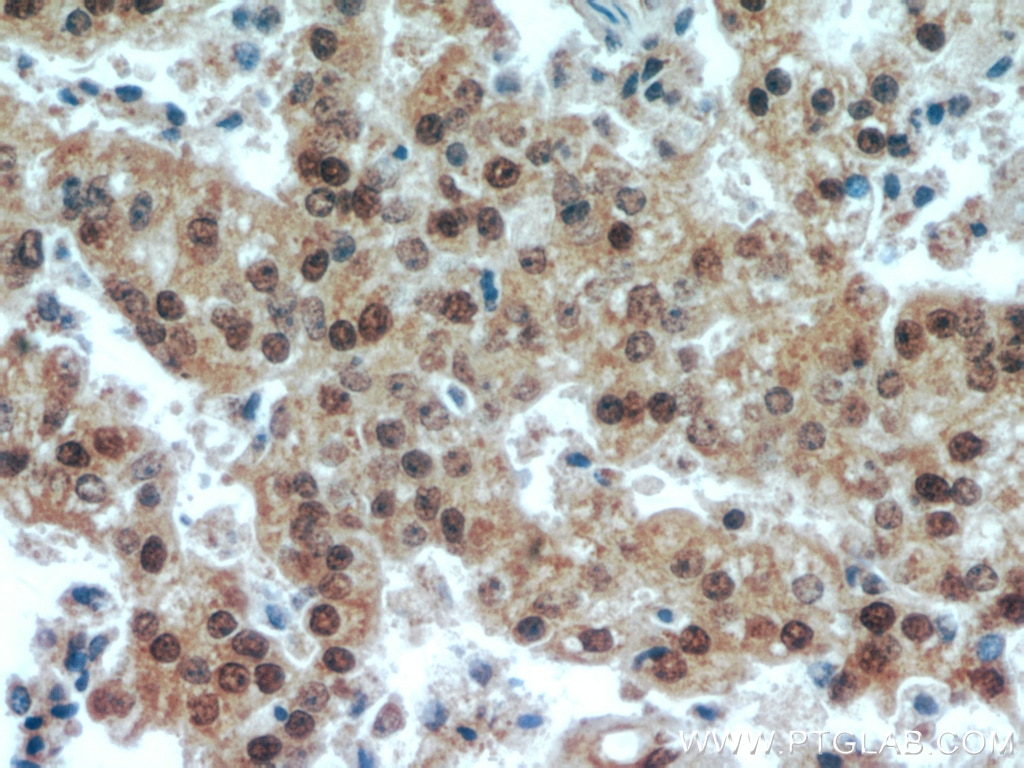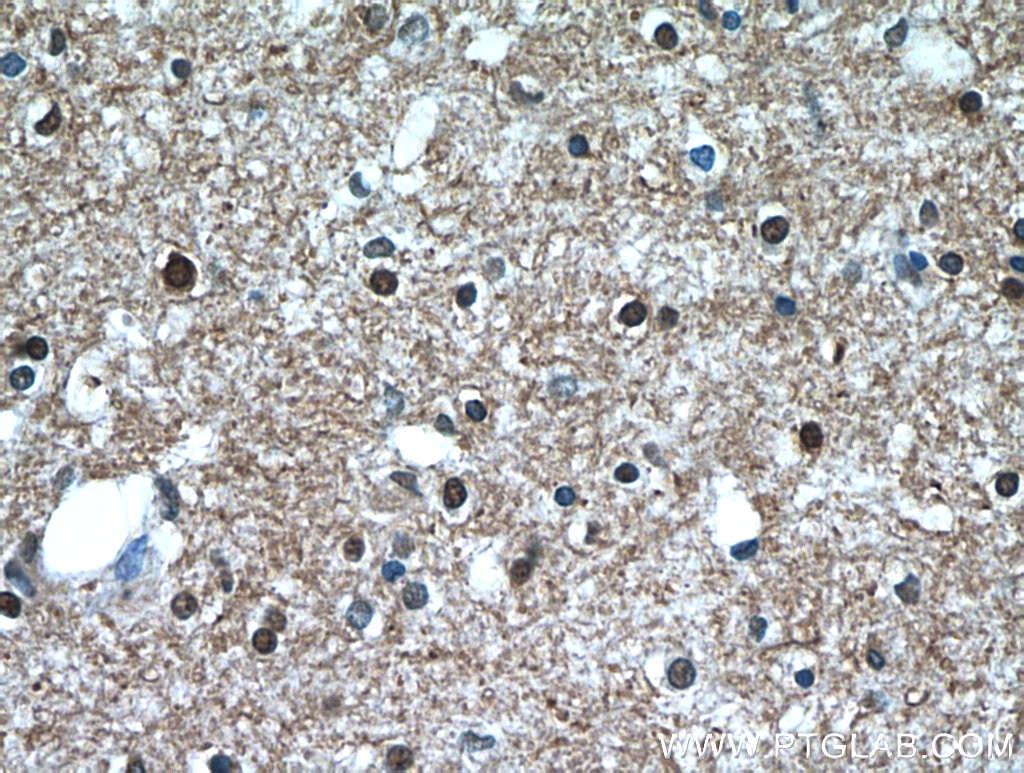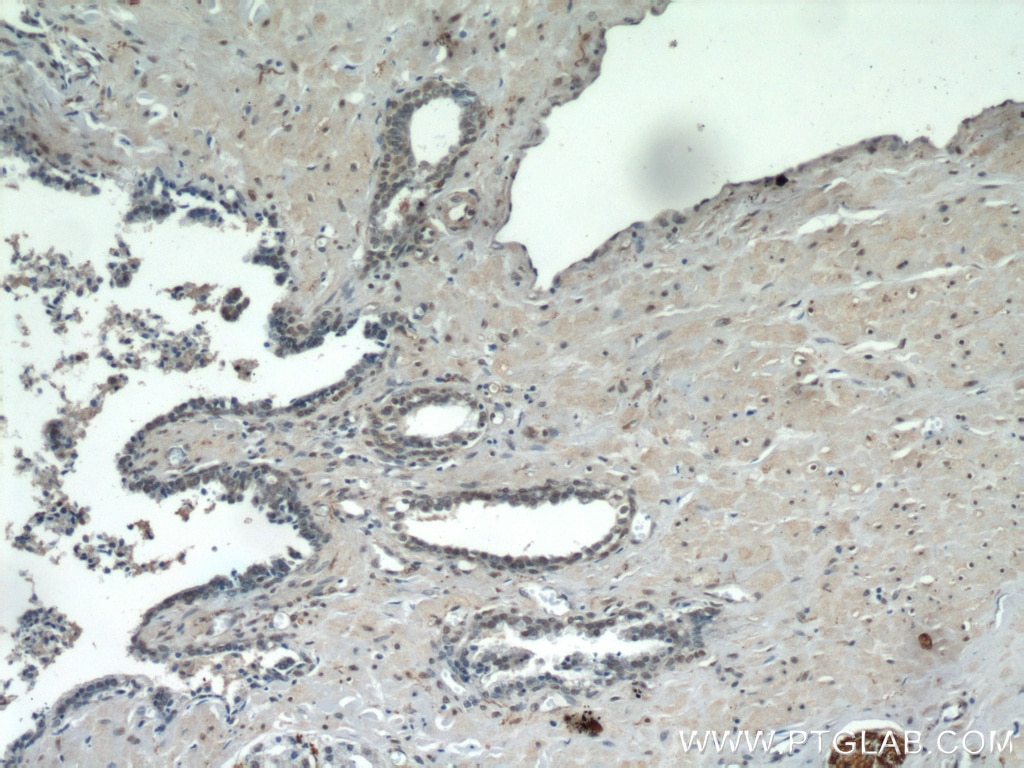Anticorps Polyclonal de lapin anti-TAF1-Specific
TAF1-Specific Polyclonal Antibody for WB, IHC, ELISA
Hôte / Isotype
Lapin / IgG
Réactivité testée
Humain, souris
Applications
WB, IHC, ELISA
Conjugaison
Non conjugué
N° de cat : 20260-1-AP
Synonymes
Galerie de données de validation
Applications testées
| Résultats positifs en WB | cellules HEK-293T, cellules HeLa, cellules Jurkat, cellules K-562, tissu cérébral de souris |
| Résultats positifs en IHC | tissu de cancer de la prostate humain, tissu cérébral humain il est suggéré de démasquer l'antigène avec un tampon de TE buffer pH 9.0; (*) À défaut, 'le démasquage de l'antigène peut être 'effectué avec un tampon citrate pH 6,0. |
Dilution recommandée
| Application | Dilution |
|---|---|
| Western Blot (WB) | WB : 1:1000-1:6000 |
| Immunohistochimie (IHC) | IHC : 1:300-1:1200 |
| It is recommended that this reagent should be titrated in each testing system to obtain optimal results. | |
| Sample-dependent, check data in validation data gallery | |
Applications publiées
| WB | See 2 publications below |
Informations sur le produit
20260-1-AP cible TAF1-Specific dans les applications de WB, IHC, ELISA et montre une réactivité avec des échantillons Humain, souris
| Réactivité | Humain, souris |
| Réactivité citée | Humain |
| Hôte / Isotype | Lapin / IgG |
| Clonalité | Polyclonal |
| Type | Anticorps |
| Immunogène | Peptide |
| Nom complet | TAF1 RNA polymerase II, TATA box binding protein (TBP)-associated factor, 250kDa |
| Masse moléculaire calculée | 213 kDa |
| Poids moléculaire observé | 250-260 kDa, 50 kDa |
| Numéro d’acquisition GenBank | NM_138923 |
| Symbole du gène | TAF1 |
| Identification du gène (NCBI) | 6872 |
| Conjugaison | Non conjugué |
| Forme | Liquide |
| Méthode de purification | Purification par affinité contre l'antigène |
| Tampon de stockage | PBS with 0.02% sodium azide and 50% glycerol |
| Conditions de stockage | Stocker à -20°C. Stable pendant un an après l'expédition. L'aliquotage n'est pas nécessaire pour le stockage à -20oC Les 20ul contiennent 0,1% de BSA. |
Informations générales
TAF1, also named as BA2R, CCG1, CCGS, TAF2A, p250, Cell cycle gene 1 protein, TAFII250 and DYT3, belongs to the TAF1 family. TAF1 is the largest component and core scaffold of the TFIID basal transcription factor complex. It contains novel N- and C-terminal Ser/Thr kinase domains which can autophosphorylate or transphosphorylate other transcription factors. TAF1 phosphorylates TP53 on 'Thr-55' which leads to MDM2-mediated degradation of TP53. TAF1 phosphorylates GTF2A1 and GTF2F1 on Ser residues. It possesses DNA-binding activity. It is essential for progression of the G1 phase of the cell cycle. Defects in TAF1 are the cause of dystonia type 3 (DYT3) which also called X-linked dystonia-parkinsonism (XDP). The antibody is specific to TAF1. It has several isoforms with predicted MW's of 200-250 kDa and 170-180 kDa, it also could get about 50 kDa band which is caused by the lysate preparation.
Protocole
| Product Specific Protocols | |
|---|---|
| WB protocol for TAF1-Specific antibody 20260-1-AP | Download protocol |
| IHC protocol for TAF1-Specific antibody 20260-1-AP | Download protocol |
| Standard Protocols | |
|---|---|
| Click here to view our Standard Protocols |
Publications
| Species | Application | Title |
|---|---|---|
J Extracell Vesicles Extracellular vesicle-mediated delivery of circDYM alleviates CUS-induced depressive-like behaviours. | ||
J Clin Invest Long noncoding RNA HITT coordinates with RGS2 to inhibit PD-L1 translation in T cell immunity | ||
J Transl Med Synergistic effect of mesenchymal stem cell-derived extracellular vesicle and miR-137 alleviates autism-like behaviors by modulating the NF-κB pathway |











